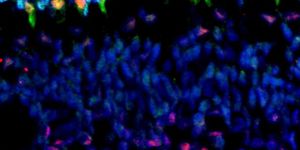Lake Kivu, on the border between Rwanda and the Democratic Republic of the Congo, is being transformed from a ticking time bomb into a potential goldmine of power generation and revenue.
Why are people concerned about Lake Kivu? It all began in 1984, when 37 people were found dead by Lake Monoun in Cameroon. Witnesses who survived the incident reported a cloud of acidic-smelling white gas, collecting in the low-lying areas surrounding the lake, which caused loss of consciousness, skin discoloration and blisters on victims. Local officials were concerned that this might be some sort of chemical weapons attack. When the US government heard about this, they wanted to find out what was going on, so they dispatched a scientific team to investigate.

Testing revealed that the lake water was almost entirely saturated with carbon dioxide. This lead Haraldur Sigurdsson, part of the US scientific team, to conclude that the cause of the deaths in the Lake Monorun incident was suffocation due to inhalation of carbon dioxide, and that something had caused the carbon dioxide to explode from the lake erupted from the lake. Once he understood that, he realized that what he and other through were thought to be blisters on the victims, were actually pressure sores, caused by lack of oxygenation to certain areas on the victims' bodies.
Many other aspects of the incident remained a mystery, until something similar occurred a few years later, in 1986. One morning, in the area surrounding Lake Nyos in west Cameroon, 1700 people were found dead. Like the Lake Monoun incident, the dead seemed to have lost conciousness and never woken up. And also, like the dead found at Lake Monoun, many of the dead were found with the same sores and discoloration on their skin.
Bill Evans and George Kling, two scientists sent by the US to investigate, discovered the same carbon dioxide saturation of the water of Lake Nyos. But where had the CO2 come from? When they interviewed residents of the area, they were found out that there were springs in the area that were deadly to all small animals that went anywhere near them. When Evans and Kling investigated, they found that water at these springs came right out of the earth completely saturated with CO2. This, they reasoned, meant that the source of the carbon dioxide must be volcanic vents feeding carbon dioxide into the bottom of the lake. The scientists then concluded that the best way to keep this kind of catastrophe from re-occurring was to attempt to gradually de-gas the lakes by running tubes to the bottom of them. This would allow the dissolved CO2 to gradually come out of solution, and hopefully to eliminate the threat.
Both Lake Monoun and Lake Nyos are on part of the Great Rift Valley, a fault where the earth is constantly tearing itself apart, which runs all the way through eastern Africa. Seeing the danger of these two lakes, Evans and Kling searched the earth to see if there were any other lakes that might present this same sort of hazard. They found one: Lake Kivu. Kivu is 2000 times the size of Lake Nyos, and about two million people live in the potential kill zone around it. But degassing such a massive lake would require huge amounts of money, and government officials thought that the risk of an explosion did not warrant such an expenditure. Then the US scientific team did core samples of the areas surrounding all three lakes. What they found was explosive outgassing events had not only happened before at all three lakes, but that over the melenia, they had happened numerous times. The scientests also found that there was more dissolved in the waters of Lake Kivu than carbon dioxide. There was also methane.
Methane, Rwandan government officials realized, is one form of natural gas, and natural gas can be used to make electricity.
Though it has taken decades to line up the funding and the energy company, final agreements have just been signed, and the first phase of plant construction is about to begin. Phase one, a 25 megawatt biogas plant, is scheduled to be operational by this May, providing electricity to millions of Rwandans who currently don't have it. Once the entire project is complete the Kivuwatt biogas project, as it is called will be producing so much electricity, some of it will be sold to countries outside of Rwanda.
If all goes according to plan, Rwandan will have turned a looming catastrophe into cheap, plentiful electricity, and a large, ongoing revenue stream.









